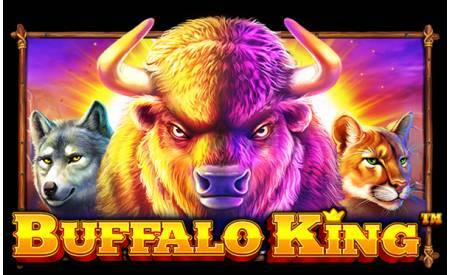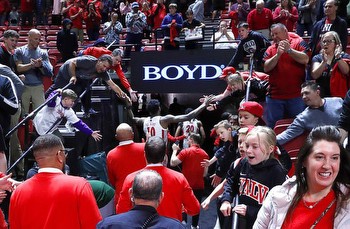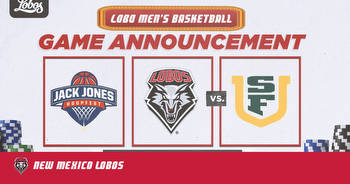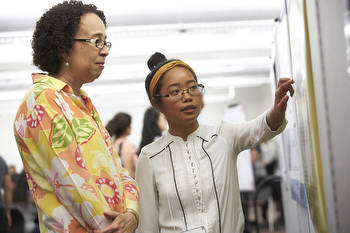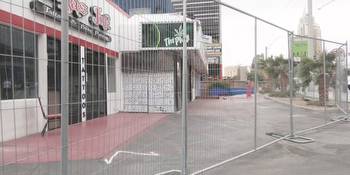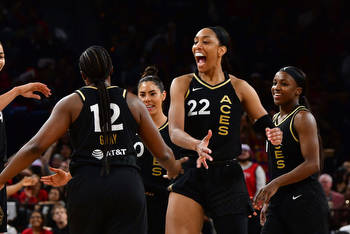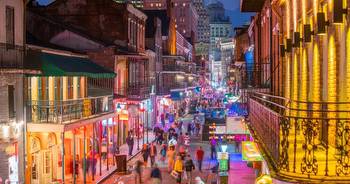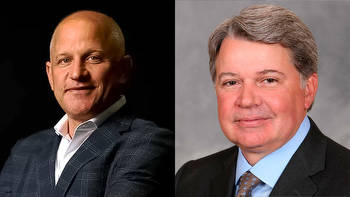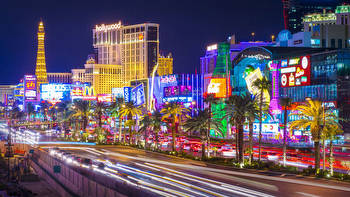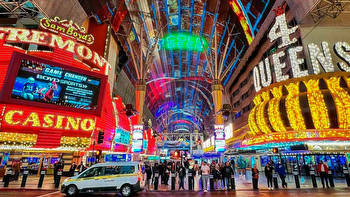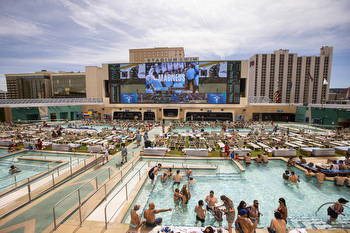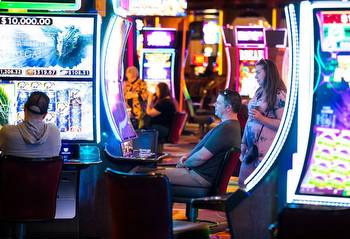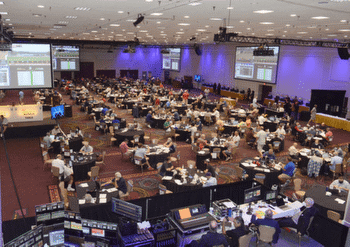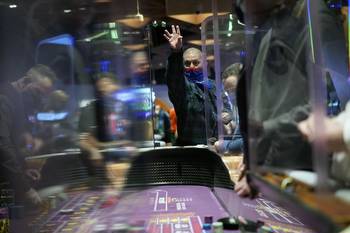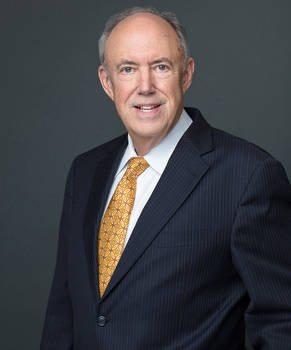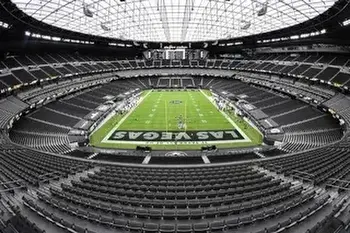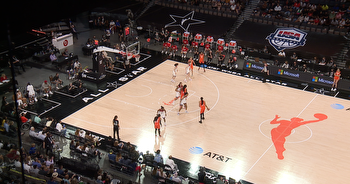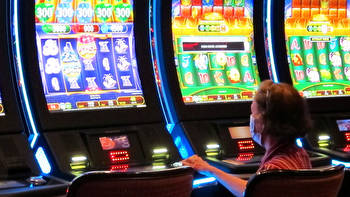How March Madness invaded Las Vegas
LAS VEGAS — Nobody has ever pictured the great Tara VanDerveer as a creature of the Las Vegas Strip. Nobody has ever wondered whether the eternal Stanford women’s basketball coach ever sneaked down here from Palo Alto and materialized beside a slot machine in a veil and sunglasses, the ice melted in her faded cocktail. It’s about as not her as not her gets.
Yet VanDerveer, of all people, wound up crystallizing the galloping evolution of Las Vegas as sports town with 13 words amid this stupendous basketball fortnight boasting 10 conference tournaments in one lit-up valley.
“I’m so far from a Vegas person,” she said after her 15th championship (and third in Las Vegas) out of the 21 Pac-12 tournaments held in her 36 Stanford seasons. “But I’m a Vegas basketball person.”
Nowadays there are Vegas basketball people, strewn all over the map.
They come to play or watch March basketball, which has become almost as commonplace to Las Vegas as delight, despair and divorce lawyers. It has joined a dizzying pile of sports in a city a fretful NCAA once shunned, events-wise, a city bulging with the pioneering UFC, the NHL’s Golden Knights, the WNBA’s Aces, the NFL’s Raiders, an NCAA West regional coming in 2023, a Super Bowl in 2024.
It has sprouted arenas like other towns do Starbucks, so that in a country finally gone oh-what-the-hell about gambling, early March can go like this: 11 days, five arenas, five western conferences, 10 conference tournaments (five women’s, five men’s), 106 teams, 96 games, enough to exhaust even the eager.
“Las Vegas has been the entertainment capital for a long time, and I think it’s becoming the sports capital,” said George Kliavkoff, the new Pac-12 commissioner plucked last year from MGM Resorts International, from Las Vegas. He cited the “walking distance from some of the venues to lots of hotels,” the hotels “at various different price points, so people with different budgets can afford to come” and “so much else to do while you’re here.”
Inhale: It has had the Pac-12 since 2013 (men) and 2019 (women), the Mountain West Conference since 2007, the West Coast Conference since 2009, the Western Athletic Conference since 2011, the Big West Conference since 2021. It has arenas named for a German phone titan (T-Mobile), for a brand of a crucial Las Vegas beverage (Michelob Ultra), for two visionary bankers (Thomas & Mack), for a next-door hotel/casino (Orleans) and for another key Las Vegas figure, a lender (Dollar Loan). The city has so many arenas that the Henderson Silver Knights of the American Hockey League have played this season in one (Orleans) but will move shortly to another (Dollar Loan), which has just opened with that new-car smell, its tequila stands up and running for noon tip-offs. It’s the Pluto of the basketball bunch yet only 20-ish minutes from the Strip.
This deluge doesn’t deluge the city, because nothing could deluge a city that has so much of so much — indoor skydiving, indoor-outdoor marrying, shark-viewing, zip-lining, organized recreational police-chase simulating, that Ferris wheel, that bonkers light show, that roller coaster, that Paris, that Venice, that New York and seemingly every famous singer you ever heard of or didn’t hear of except for Adele, who had to postpone.
And David Copperfield, forever.
And that immersive Van Gogh thing.
Basketball has joined the fray on the sidewalks, somewhere beneath the showgirl plumes. It shows up every now and then: two Colorado State Rams fans near that roulette wheel, that streak of Wildcats from Arizona near those slot machines, the Gonzaga fans here and there and also over there, the visiting Hawaiians in Henderson. All this would have seemed “completely far-fetched” more than 30 years ago when Erick Harper started off in athletics, and now the UNLV athletic director says, “I try to think outside the box, but at the same time, who would think about a city that could host 10 tournaments and all the tournaments be successfully run?”
“It’s unbelievable,” he said.
It began as a trickle three decades back, with the Big West stopping by in 1994 and 1995, the WAC from 1997 to 1999. The Big West already had the one glam member that seeded the whole phantasmagoria of today: UNLV. That made the site seem routine even if the era did seem raffish, with a team such as Long Beach State coming to town, renting its own three vans and convoying to the Mirage.
“The image of Vegas has really, really changed,” said ESPN analyst Seth Greenberg, who coached Long Beach State then. “Vegas is a destination. It’s not just ‘Wow, wow, wow’ anymore. It’s more established. It’s more traditional in lots of ways.”
Now the zoo boasts so much March.
There’s March in a 48-47 scrap that ends in a scrap beneath the basket — players on the floor, seasons in the balance, the horn sounding, the coach with 47 points hollering at the departing referees. There’s March when a winning coach, Laura Beeman of Big West No. 1 seed Hawaii, walks to a losing coach, Greg McCall of No. 9 seed Cal State Bakersfield, a 5-foot-5 woman hugging and consoling a 6-6 man.
“Greg’s a great man,” she said soon after. “And he just kind of looked at me like, ‘Wow,’ ” marveling at the game. “I’ve known Greg for 20 years, and I consider him an outstanding coach and outstanding person. . . . Not sorry that it came down the way that it did, but sorry that it ends the way it did for [his] group. . . . Bottom line, this is a game, and compassion and some other things matter more than being mad at people.”
That’s March, even if it feels funky to carry it out into the midday sun of Henderson, up the freeways toward the Strip and past the billboard for Penn & Teller.
There’s March in the beauty of the crying coach, in this case a five-year NBA veteran of four NBA franchises. “It’s emotional because my kids, the players, wanted it,” said Jeff Judkins, the 21-year coach of No. 1 seed BYU (26-3), which lost the WCC women’s final to No. 2 seed Gonzaga, 71-59, three weeks after it beat the Bulldogs, 63-39. While Gonzaga’s affable Idahoan Melody Kempton, the most outstanding player, No. 33, walked up the stands into a cluster of No. 33s — parents, grandparents, fiance, friends et al. — to bring her parents to the floor for deep meaning, the other side of March hit Judkins, who continued: “A lot of times in life you don’t get everything, but you sure want it. That’s where the emotion is. . . . I know how much the players wanted.”
And then this 65-year-old former player for the Celtics, Jazz, Pistons and Trail Blazers said, “I’m also crying because it’s one less game with my seniors.”
He paused for the next question, and the microphone caught a further sniffle.
That’s March, even if it feels strange to carry it out of Orleans Arena, into late-afternoon light and into the view of the Strip gleaming and giggling over yonder.
There’s March in the sadness of the shipwrecked season, as in the bewildering 13-month trajectory of Oregon State. Last March 29, the Beavers lurked on the edge of the Final Four, having clambered from a 34-17 deficit in a Midwest Region final to a 55-55 tie with 3:21 left. Houston won, but Oregon State soared, until it went 3-28 this season.
The players clearly tried in their closing 86-72 loss to Oregon, and the commendable sliver of Beavers fans reveled at Las Vegan Glenn Taylor Jr.’s three-point play that narrowed the deficit to 61-58 with 11 minutes left, and big man Roman Silva spoke of taking “as much positive out of the season as I can” and valuing “the relationships that I’ve made here” that “are going to last a lifetime.”
Still: How could basketball do this to a 6-10 man who has adored it all his 56 years, who played it in Division I as did his wife and all three children? “It’s funny how life goes, the feelings we had just over a year ago to now,” said that man, Oregon State Coach Wayne Tinkle, “and there’s some valuable lessons in there." And: “And obviously it’s a devastating season. I’ve got to take the blame.”
That’s March, too, even if it’s carried out of T-Mobile Arena into the shadow of an ersatz New York skyline.
There’s March in the hidden wonders of a sport with 358 teams, and here’s Utah Valley, which would make a swell name for a Cinderella. Here’s the coach, Mark Madsen, 46, 6-9 and still part man and part topographical formation, 24 years after the 1998 Final Four with Stanford, 13 years after an NBA career that included Shaquille O’Neal’s praise of him for his impossible energy during Lakers practices.
Yet over behind the baseline, here’s a revelation: Utah Valley’s “Green Man Group,” three lines of drummers with heads and bodies swathed in breathable green fabric, glorious aliens in the Vegas night. They do many kinds of shows, but here they do March, drumming in special cadences for made free throws at times, swaying together arm-in-arm at times, reminding what drums can do to neck hairs at all times.
They went late into a WAC Tuesday night in Utah Valley’s win over Chicago State, and though they exited one night later to Abilene Christian, they, too, lent some fine March, even to carry out of the Michelob and into Mandalay Bay and the chronic bells of the slots.
And there’s never more March than in a frenzied three-point shot rising out of the corner from a player with some storybook name such as Essence with a tattoo of the Las Vegas sign on her right biceps. It came with 45 seconds left. It came after a timeout with the shot clock at a hapless two seconds, after teammate Khayla Rooks said, “Make this shot.”
Essence Booker’s shot gave her irresistible UNLV team a 72-65 lead, gave her 25 points and clinched a Mountain West title against a scary challenge from Colorado State, whose coach, Ryun Williams, lauded his players with, “We went for it.” Then UNLV’s Lindy La Rocque, a Las Vegan former Stanford player and assistant to VanDerveer, spoke of love and trust and called this moment “way, way, way up there” and said, “I would do anything for [my players] because I know they would do anything for me.”
That’s so much March to carry out of Thomas & Mack into warm nighttime air in this Las Vegas era, past the statue of a seated Jerry Tarkanian chewing a metal towel, onto the boulevard and toward that billboard of Donny Osmond.







